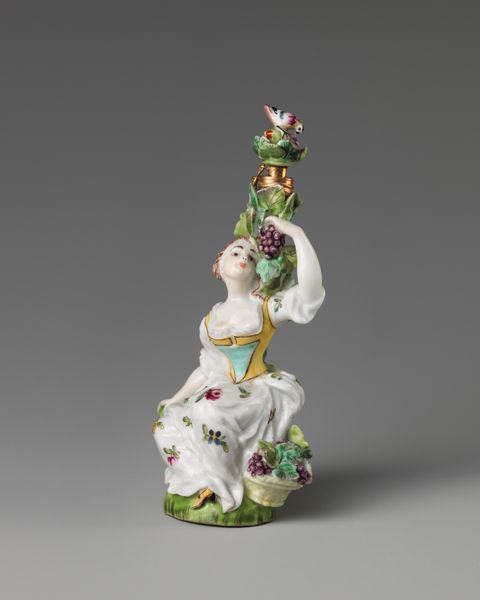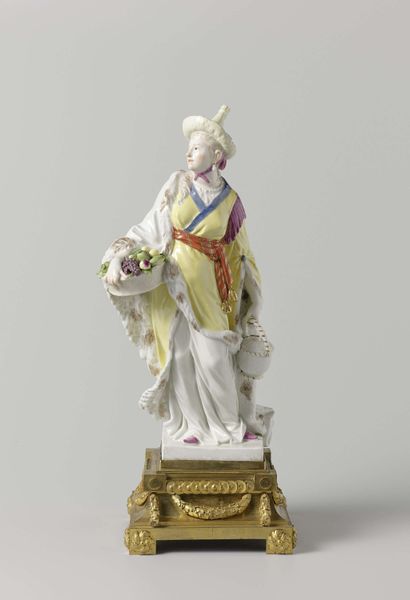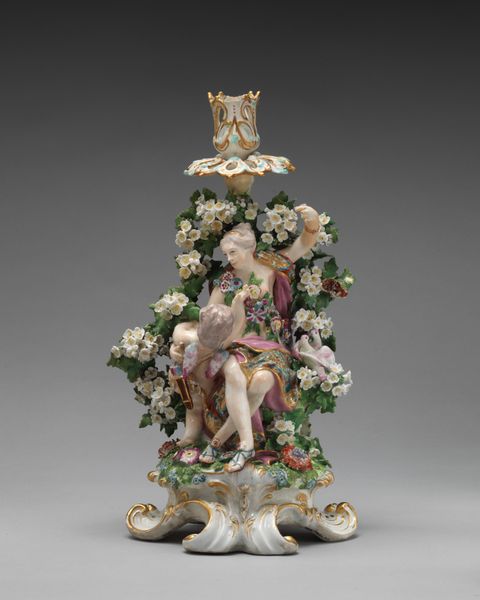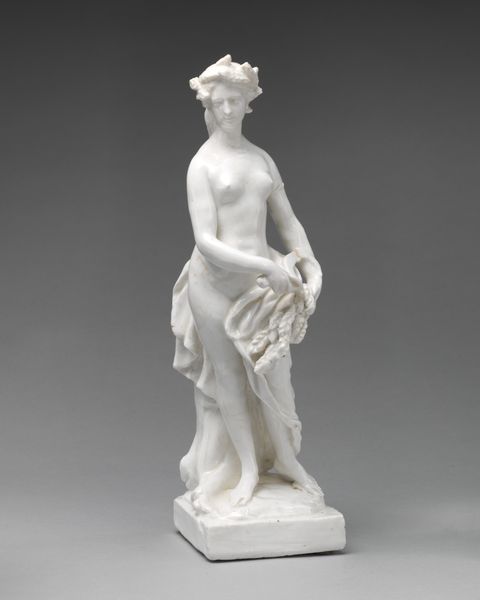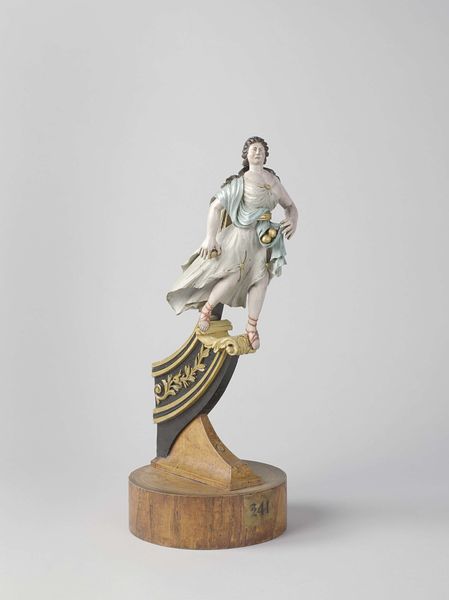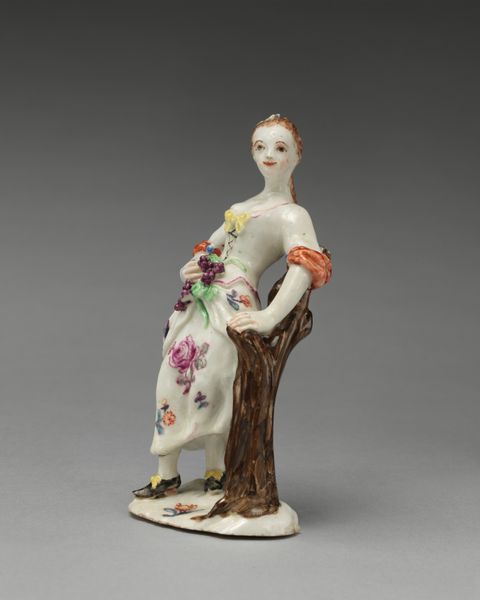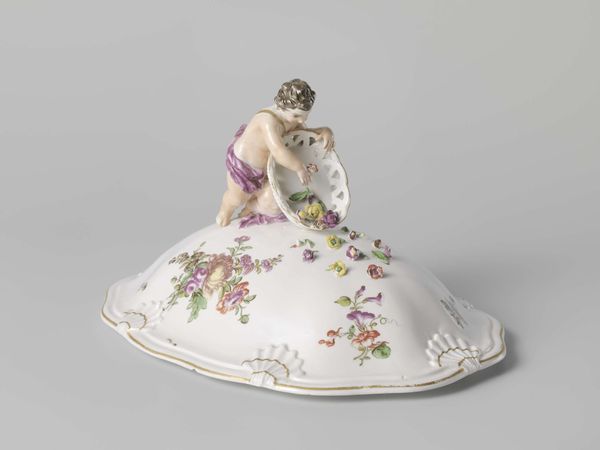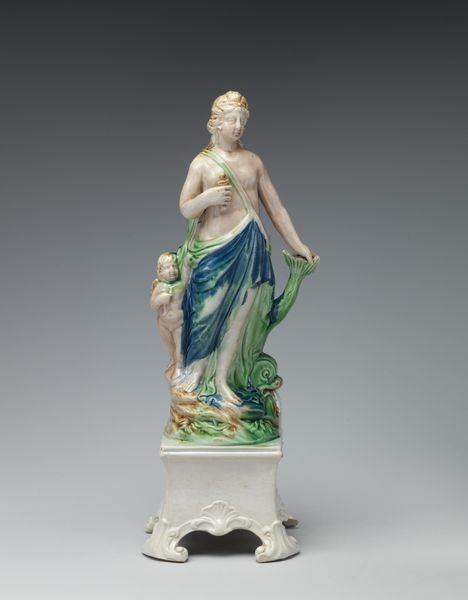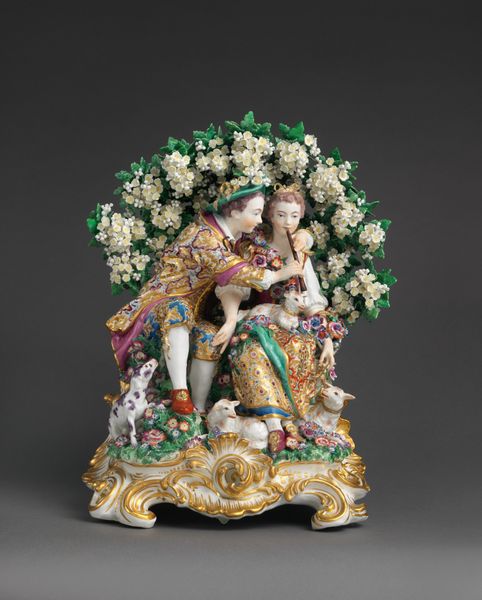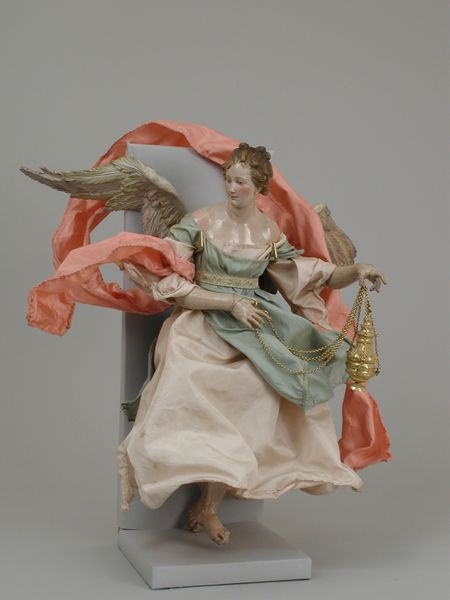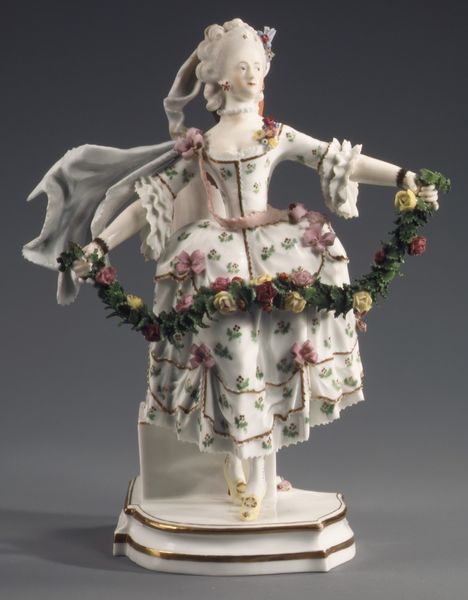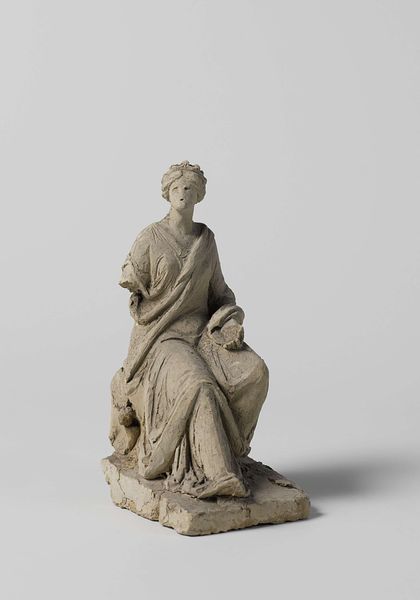
ceramic, porcelain, sculpture
#
allegory
#
animal
#
landscape
#
ceramic
#
porcelain
#
figuration
#
sculpture
#
history-painting
#
decorative-art
#
miniature
#
rococo
Dimensions: Height: 11 1/8 in. (28.3 cm)
Copyright: Public Domain
Curator: This meticulously crafted porcelain sculpture, known as "Hearing," was produced by the Chelsea Porcelain Manufactory around 1750-1760. Editor: Immediately I notice the pastel palette, the woman looks poised, relaxed, but I find the composition…stiff, somehow? There's something about that rigid, porcelain quality that creates this artificial calm. Curator: Consider this sculpture in light of the Rococo period, and it speaks volumes about the elite's pursuit of pleasure and refinement during this era. We see allegory being used here, and its important to unpack how gender is performative in Rococo art to decode some of the readings one might have of the statuette's body language. Editor: The woman’s languid pose and musical instrument serve as recognizable emblems, of course, representing the sense of hearing. I see this repeated through a tradition where certain objects signal virtue or knowledge – how the lute has persisted in our collective memory of romantic iconography. Curator: Yes, it’s the construction of “femininity” at play here! Note the pastoral setting, so in vogue then, and how the positioning of the lamb might be an acknowledgement of social status of both subject and viewer. Where is agency located in this tableau, if at all? Editor: An interesting reading... But consider, too, that the animal provides an intimate connection, echoing an age-old pairing of humankind and nature. What do you see, then, when the female form intertwines with symbols, each layered with narrative intent, a tapestry of associations between what we value or aspire to become. Curator: Right – in looking at depictions such as these, one needs to be aware that symbols aren't neutral, of course! But seeing past an aesthetic reading requires engaging in power relations in artistic expression to gain a fuller perspective. Editor: And yet, even beyond the intent of class or context, there’s a visual poem here, something deeply evocative even for modern viewers. Seeing an artifact so imbued with symbolic meaning, it calls back our inherited history. Curator: Very true. It leaves us thinking about how representations of femininity have changed...or not! Editor: Precisely, it allows us to reflect not only on the past but also our present experience of cultural symbolism.
Comments
No comments
Be the first to comment and join the conversation on the ultimate creative platform.

